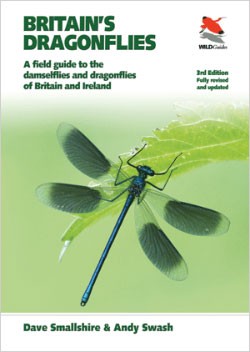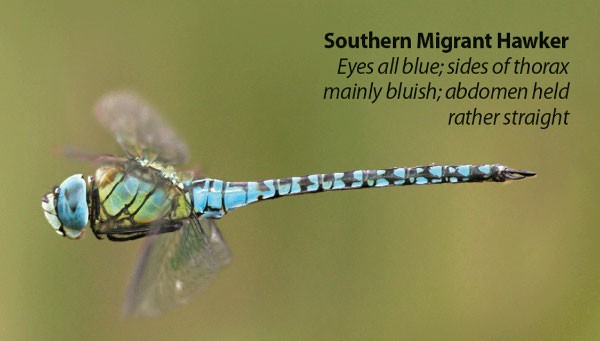Britain's Dragonflies by Dave Smallshire & Andy Swash

And it is the Odonata of Britain (and Ireland!) that make up the subject matter of my most recent acquisition, the fully revised and updated third edition of Dave Smallshire and Andy Swash's excellent Britain's Dragonflies, complete with a gorgeous male Banded Demoiselle on the front cover. You may already be familiar with this or other titles in WildGuides' Britain's Wildlife series (Britain's Hoverflies being a title I reviewed in April 2013): they're popular, informative and pocketable photographic field guides, and the Dragonflies title is no exception. It's four years since the previous edition was published, so expect updated plates, images, distribution maps and species profiles.
As the blurb rightly claims, this is the 'only comprehensive field guide to damselflies and dragonflies of Britain and Ireland'. If this wasn't enough to convince you to purchase a copy, allow me to give a brief overview of what it offers as a publication. The guide begins with a 50-page introduction to Britain's Odonata: biology, ecology, where to look, and how to view, photograph and identify are all tackled brilliantly and will ensure just about anyone — no matter how inexperienced — is prepared to tackle these often tricky subjects when out in the field. It is actually this section that contains one of my favourite features of the guide: the adult identification charts. As many will agree, the identification of the various blue damselfly species is tricky to say the least, but the guide's easy-to-use charts and diagrams ensure that comparing them is an entertaining learning curve rather than the boggy chore it could so easily be — abdomen, thorax and pronotum differences are all laid out in an understandable (and crucially for field identification, memorable) format. The same applies for the thorax and abdomen of the various hawker species.
The species accounts themselves are set out with an impressive clarity — the text, sectioned into identification, behaviour, habitat and population/conservation, is offset by an unambiguous range map and a graph illustrating flight times. Updated content includes recent records of rarer species: the inclusion of 2012's two Yellow-spotted Whiteface records from Suffolk is one example that leaps out. The best bit, though, is the quality of photographs — each species is illustrated by at least one of each sex (as well as age/colour form variations where applicable), with over 450 throughout the guide.

An example of the annotated illustrations from the third edition of Britain's Dragonflies.
The guide concludes with another series of charts and diagrams, this time concentrating on how to identify each species' larvae. A quick flick through the illustrations may seem overwhelming — many of the larvae look identical at first glance — but, once again, the deluge of information is well presented and a subject that could easily daunt a budding odonatologist is in fact made entirely digestible. If you haven't already got a copy, it's well worth investing £17.95 in this revamped edition of Britain's Dragonflies to ensure that you're in good stead for a summer of insect-watching.
Paperback | 2014 | £17.95 | ISBN: 9780691161235
224 pp. | 6 x 8 | 321 color illus. 66 maps.
See press.princeton.edu/titles/10222.html for more details.



